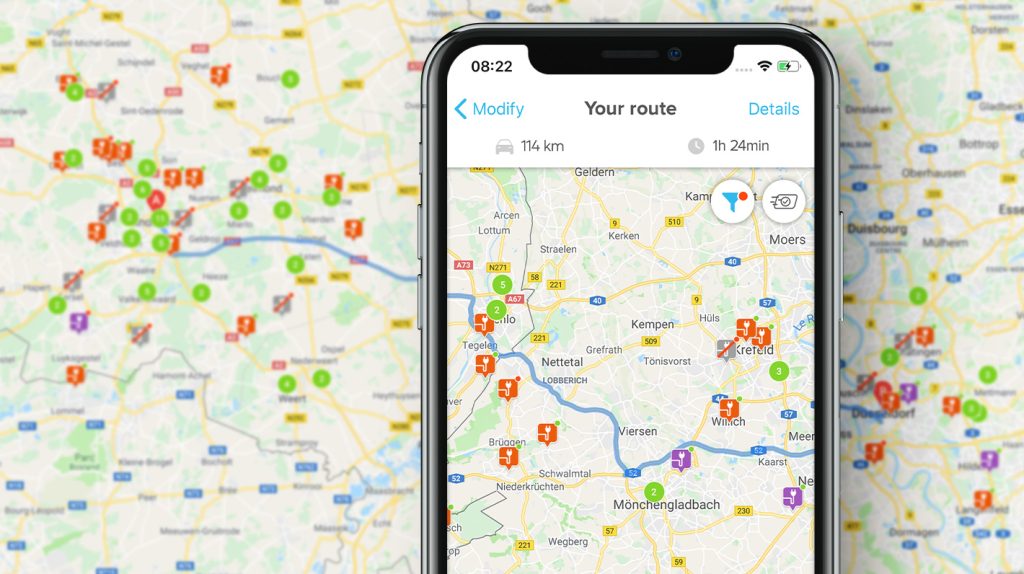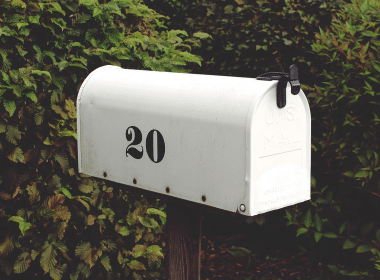Time is money when it comes to customer relationships in logistics. Meeting deadlines is key to a good customer experience, with more than half of customers willing to pay more for great service. Efficient route planning and route optimization form a significant part of logistics. It is essential to meet your schedule and beat customer expectations while keeping operating costs well down.
In the ultimate guide to efficient route optimization, we will look at the importance of route planning in logistics and how optimized delivery routing can help your business. By focusing on the right routes, you can simplify and improve customer experience, which means more loyalty and revenue.
What is Route Optimization?
Route optimization is the process of finding the best route for a set of deliveries or trips. This means calculating the shortest path that minimizes travel time, fuel consumption and operational costs while maximizing productivity, field service, and customer experience.
By using advanced algorithms and real-time data, businesses can plan routes that reduce unnecessary detours and delays and get goods and services to customers quickly and efficiently.
How Route Optimization Works
Route optimization uses algorithms that look at factors such as distance, traffic, delivery windows and vehicle type and capacity. These algorithms process lots of data to find the best routes.
Modern route optimization tools often integrate with GPS and mapping software to make users get real-time updates, maps and adjustments. This means they optimize routes in real time based on current traffic and other dynamic factors.
What is Route Planning?
Route planning for route planners is the process of pre-planning the routes vehicles will take to reach their destinations. This means scheduling stops, sequencing and considering factors like delivery locations, time windows and driver availability.
Route planning is key to driving this success for businesses that rely on on-time deliveries as it reduces travel time, fuel costs and overall operational efficiency.
How to Implement Route Planning
Implementing route planning involves several steps:
- First, gather all the data, including delivery addresses, time windows and vehicle capacity.
- Next, put that data into route planning software that can process the map and optimize the routes.
- Also update the data regularly to reflect changes in delivery schedules, traffic, and other variables. Train drivers and dispatchers on using the route planning and tracking tools, so implementation and execution are smooth.
The Basics of Route Optimization
Route optimization is all about efficiency. It’s about finding the quickest route or most direct route. It’s based on fundamental principles like the Traveling Salesman Problem (TSP) and the Vehicle Routing Problem (VRP) which are the foundation for all route optimization methods.

When it comes to route planning, businesses need to consider several constraints:
- Delivery timeframes.
- Vehicle capacity.
- Driver availability.
- Traffic Conditions.
- Weather Conditions.
- Special Delivery Requirements.
These are key to planning routes and creating practical and efficient routes.
By combining these factors, companies can create routes to multiple destinations that save time and resources and improve overall operational performance. This approach to route planning is critical in today’s fast-paced market.
Benefits of Route Optimization and Route Planning
Route Optimization and Route Planning bring many benefits to a business:
- Costs – Cost savings is one of the benefits of route optimization, as it reduces travel time and fuel consumption for multiple routes, resulting in significant cost savings for businesses.
- Timely Delivery – On-time deliveries, which are a result of good route planning, mean higher customer satisfaction, loyalty and repeat business.
- Improved Productivity – You also increase driver productivity because optimized routes allow drivers to do more deliveries in less down time driving, and overall efficiency.
- Sustainability – The environmental impact reduction is significant with fewer emissions as optimized routes mean less fuel consumption and a smaller carbon footprint.
- Simplifies Operations – In general, route optimization simplifies operations and supports sustainable practices so it’s a win-win for businesses and the environment.
Technologies Behind Route Optimization
Modern route optimization uses a combination of technologies, such as Global Positioning Systems (GPS), Geographic Information Systems (GIS) and advanced algorithms.
Machine learning and artificial intelligence are key, as these technologies enable continuous improvement in route planning and optimization. By using these tools, businesses can improve their operational efficiency and decision-making capabilities.
The beauty of these technologies is that they can analyze data in real time so organizations can respond quickly to changing conditions. This is critical in today’s fast-paced environment where traffic patterns, weather and other variables can change quickly.
So businesses can adjust their own delivery routes, to address this in real time and ensure you perform deliveries and services as efficiently as possible.
In the end, the combination of GPS, GIS and intelligent algorithms simplifies route planning and overall company productivity. By learning from data and adjusting strategies accordingly, these systems give businesses a competitive advantage. This approach to route optimization saves time and resources and customer satisfaction through on-time and reliable service delivery.
Route Planning Best Practices

To achieve better route planning, follow these tips for better route optimization:
Planning
Develop a solid plan to increase revenue through route optimization. Focus on maximizing vehicle utilization, capacity and loading efficiency and you can increase overall operational productivity. Analyze your current processes and identify areas for improvement so every vehicle is used to its full potential and overall profitability.
Assess Your Space and Resources
Before assigning tasks to your delivery team, assess the available space in each vehicle in your fleet. This is critical to optimize vehicle capacity as you can allocate resources properly and make sure you load every vehicle to its full capacity. By doing this, you can simplify operations and improve your delivery system.
Monitor Driver Availability
Implement a system to monitor driver availability and requirements based on their location. Accurate scheduling is key to effective driver coordination and last-mile delivery.
Dispatchers should know each driver’s shift hours and starting and ending points so they can allocate deliveries properly. Using advanced route planning and routing software can help this process, make real-time adjustments and provide drivers with a mobile app to get updates on route changes so they can deliver on time and efficiently.
Improve Fleet Efficiency
Knowing your fleet operations is key to maximizing workforce productivity. Planning multi-stop routes for delivery drivers is a complex and time-consuming task.
Multiple factors such as fleet size, real-time traffic updates and specific delivery service time and constraints make manual route planning a challenge, so it’s best to use advanced solutions for better efficiency.
Reduce Delivery Errors and Costs
To simplify your last-mile delivery process, you need to eliminate mis-deliveries and redeliveries. Each redelivery consumes resources and costs without generating additional revenue, so overall delivery costs increase. Missed deliveries require time to track down the package, replace it if damaged or lost and arrange for a new delivery which can erode profit margins. Using delivery route planning software can resolve these issues.
Keep Your Customers Informed
Many logistics companies struggle to keep their customers updated on estimated delivery times. Using route management software can give you and your customers real-time updates on delivery status in multiple locations, so delivery times are accurate.
Automating customer communication can further improve this process so customers get timely information to manage their daily schedules and reduce the volume of routine service calls made to customer support. Send notifications via SMS or email so support staff can focus on complex customer issues.
Simplify Data Management
Manual data entry is a big challenge for delivery fleet managers, time and resource-consuming. By automating the import of data from Excel files to a route management system, you can eliminate tedious spreadsheet updates and ensure your data reflects your operations.
This automation also allows for more accurate business performance analysis through customizable maps, dashboards and reporting tools.
Improve Delivery Speed with a Route Planner
On-time delivery is key to improving customer satisfaction and loyalty. Late shipments can deter customers from using your service again.
To avoid delays, implement a route planning and optimization system that can adapt to real-time conditions. This technology will calculate the most efficient route and provide drivers with real-time navigation updates so they can focus on delivering rather than navigating for directions.
Investing in route planning and optimization will give you long-term benefits for your own business growth. By optimizing travel routes, you will save time and reduce operational costs so overall financial performance will improve.
This proactive approach to logistics will increase customer satisfaction and loyalty and give you a competitive edge in the delivery industry.
As a Final Thought
Planning and refining your travel routes strategically can give you long-term benefits, including time, financial and overall efficiency savings. To achieve route optimization, you need to have precise and up-to-date information. Using real-time data and communicating with drivers can help you to adjust routes on the fly so you can respond to changes.
To stay competitive, you need to review routes regularly and improve your route planning and optimization strategies so you can stay ahead of the game.





